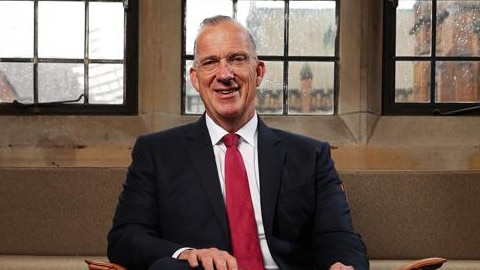Coronavirus: ‘Catastrophe’ looms as university losses skyrocket
The coronavirus will cost the University of Sydney almost half a billion dollars this year, according to its vice-chancellor

The coronavirus will cost the University of Sydney almost half a billion dollars this year, according to the institution’s vice-chancellor.
Michael Spence told university staff on Wednesday that student numbers for 2020 were 10 per cent below expectations, with most of the shortfall due to fewer international students.
Domestic student numbers were 4.8 per cent below target while international students, who pay much higher fees, were 16.8 per cent down.
The estimated $470m budget shortfall includes an extra $55m being spent on efforts to mitigate the effect of the virus, such as additional cleaning, technology for online teaching and support for students, including those suffering hardship.
However, the university can’t be sure how many students it will have in semester 2 this year, so the estimated shortfall could change.
READ MORE: Two key moves to save sector | Vice-chancellors take pay cuts | Kiwis put us to shame | Uni fees should be higher | Unis miss out on $2bn JobKeeper support
Dr Spence said it was clear the virus would have a long-term impact on the university and the recovery would be prolonged.
In March the university announced savings measures including a pause in recruitment, infrastructure investment and a reduction in spending.
Dr Spence said that details of more financial measures would be announced in coming weeks. He said talks would continue with the federal and NSW government and the university would “explore all possible avenues to support our financial position”.
According to Universities Australia, the coronavirus will cut up to $4.6bn from university sector revenue this year.
In federal parliament on Wednesday, Labor education spokeswoman Tanya Plibersek called on the government to give emergency support to universities during the crisis, warning that some were in danger of collapse.
“Universities are worried that both international and local student numbers will continue to fall before the second semester,” Ms Plibersek told parliament.
“There are genuine fears that, without federal government support, some universities may collapse. This would be a catastrophe.”
The dire forecasts for the University of Sydney were in sharp contrast to the relatively sunny outlook offered by Julie Bishop — recently installed as the chancellor of the Australian National University — who said on Wednesday she was confident that ANU would pull through the financial crisis caused by the coronavirus.
Speaking to The Australian, the former foreign minister said there were a range of possible outcomes for the ANU, “from a worst-case doomsday scenario through to, hopefully, a best-case scenario where we are able to open the campus again as soon as possible”.
But the ANU has not yet released any estimate of its budget shortfall this year, following the loss of large numbers of international students due to travel bans and the impact of the virus.
Ms Bishop also said that, for next year’s intake of school leavers — whose Year 12 studies are being disrupted by the coronavirus — the ANU will offer university places on the basis of students’ Year 11 results.
“What our offer will do is give those wanting to study at ANU next year certainty, and hopefully remove much of the stress and anxiety,” she said
Applications are open now and the ANU will make unconditional offers in August to students on the basis of their Year 11 grades. They will still be required to complete Year 12.
The university said that a review of last year’s admissions had shown that Year 12 performance could be reliably predicted from Year 11 results.
But Ms Bishop said that students who missed out in the August offers will still be able to apply to the university on the basis of their Year 12 results this year.



